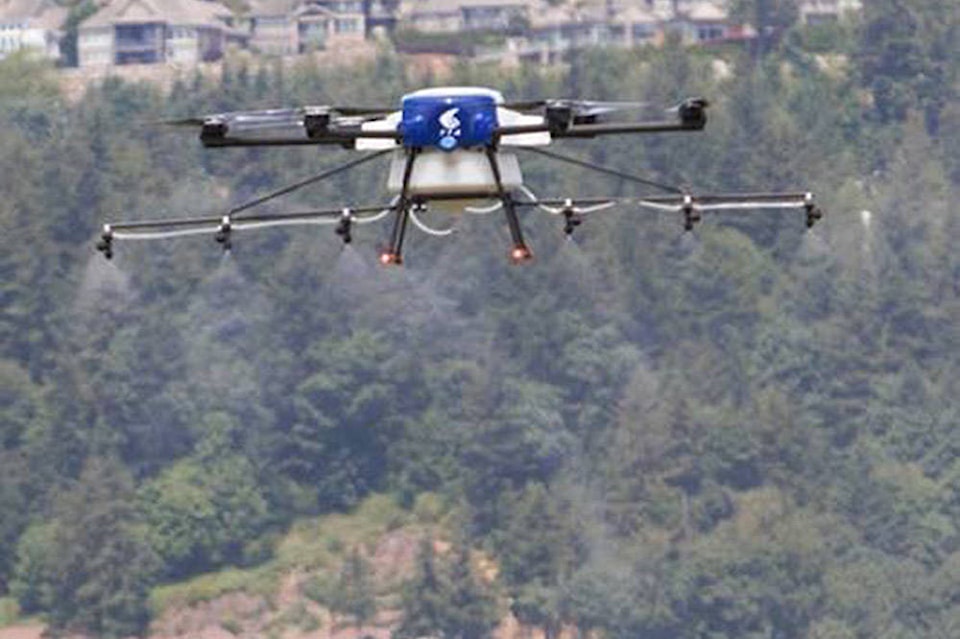Studying different ways of applying pesticides to plants isn’t new to Markus Clodius. After all, that’s his main job at the Agassiz Research and Development Centre. But this summer might see Clodius researching whether a new kind of technology will be just as effective for putting pesticides on fields: drones.
“This kind of efficacy trial isn’t new to me,” Clodius said. “But this kind of efficacy trial with this kind of tech, that’s very new.”
Using drones in agriculture isn’t as avant-garde as it might seem. Government research facilities in Summerland and Atlantic Canada have used drones to monitor plant stress, while commercial growers have used drones for everything from manure application to visual reconnaissance.
But this study would be the first time drones have been used for pesticide application in Canada.
“This is kind of a dry run for us at this point,” Clodius explained. The trial — which is a partnership between the Agassiz Research Centre, provincial authorities, commercial representatives and Precision Crop Tech, an Abbotsford-based drone company — is still waiting for permits before it can do any sprays this summer.
“If pesticide application with drones are to become commonplace in the long term, there’s a number of regulatory hurdles that will have to be cleared,” he added.
RELATED: Drone operators subject to age limit, certification under new federal rules
Transport Canada has a role in licensing drones and their pilots. The provincial government has a role in licensing commercial pesticide applicators. Health Canada is responsible for deciding which pesticides can be applied in which ways, under the Pest Control Products Act.
Clodius’ study would be looking at the information Health Canada needs to make decisions for the Pest Control Products Act: how does the product work with a drone, how much is needed for proper coverage, what the pesticide drift is like and how much residue there is.
“Our piece of this is to look at the pesticide labels themselves, where Health Canada has regulatory authority, and say does this work with a drone?” he explained.
“Ultimately the decision is theirs, but we want to feed them information in hopes of getting the labels changed for small growers who basically wouldn’t have access to these things otherwise.”
Right now, pesticide application is limited to ground vehicles and manned aircraft. Using drones to apply pesticides would be considered an aerial application, and so would only be appropriate for pesticides that specifically allow for that kind of use.
But Clodius will be testing to see if drones can be just as effective as hand-held boom applications.
SEE ALSO: Century of farming research celebrated in Agassiz
This week, Clodius will be planting 10-plots of leeks in the Agassiz Research Centre field and inoculating them with thrips, a sucking pest no bigger than an eyelash. Then, likely sometime in July, he’ll be working with the owner of Precision Crop Tech to use drones to test two different kinds of pesticides on the leeks.
If it goes well, more studies could be in the future, as Health Canada decides what other information it needs to make decisions on what pesticides are drone-worthy.
“It’s hard to predict right now what way it will go,” Clodius said. “But that fact that these are being used for this purpose in other jurisdictions already suggests to me that there’s going to be economic pressure on our growers to adopt it sooner or later.”
According to Clodius, growers in China, Japan and parts of the United States are already using drones for pesticide application, and having the regulatory systems in place for them.
“Other countries have already been early adopters of this technology,” he said. “I expect that we’ll eventually follow. But we have some hoops to jump through first.”
grace.kennedy@ahobserver.com
Like us on Facebook and follow us on Twitter
